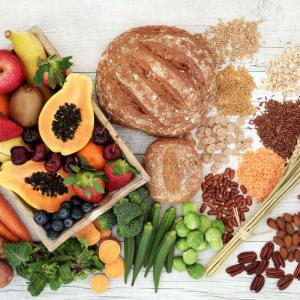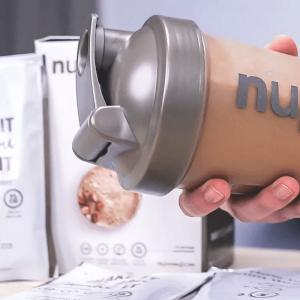In rare cases, repeated episodes of gastroesophageal reflux cause the refusal of food with the appearance of growth and development retardation or weight loss of the child, manifestations that indicate the presence of an underlying evolving medical condition, which requires additional investigations and treatment.
The child's gastroesophageal reflux is considered to be pathological when complications such as esophagitis or esophageal strictures (narrowing of the esophagus) occur, medical conditions known as GERD gastroesophageal reflux disease. Esophageal reflux disease represents a medical entity different from esophageal reflux and is frequently associated with other medical conditions represented by prematurity, deficit of the child's neurological development or lung diseases such as cystic fibrosis.
Causes and symptoms of gastroesophageal reflux in infants
In infants, the lower esophageal sphincter (the muscular ring through which the esophagus enters the gastric cavity) is incompletely developed, allowing the occasional passage of ingested food from the stomach back to the esophagus, but without causing vomiting. Infant gastroesophageal reflux is favored by certain risk factors, including:
- Placing the infant in the supine position immediately after eating
- Ingestion of mainly liquid food
- Premature birth.
The manifestations that accompany gastroesophageal reflux in infants are non-specific and frequently include excessive crying, irritability, arching of the back through the contraction of the paravertebral muscles and sometimes food regurgitation.
How to relieve reflux in infants
Gastroesophageal reflux in infants can be improved by some simple methods to apply, namely:
- Feeding the child in a vertical position and maintaining this position for another 30 minutes after the meal. This maneuver favors the passage of food from the esophagus to the stomach under the influence of gravity.
- Feeding the infant frequently and in small quantities because the infant's gastroesophageal reflux can be improved by reducing the amount of milk ingested per portion in the bottle or feeding at the breast for shorter periods, repeated at shorter time intervals.
- Stimulating the infant to belch - during breastfeeding, the child can swallow air which favors gastroesophageal reflux after the meal. It is encouraged to place the child in a vertical position on the mother's shoulder and gently tap the infant's posterior chest, until the inhaled air is expelled.
- Placing the infant in a supine position (on the back) during sleep, at least 30 minutes after eating.
Causes and symptoms of gastroesophageal reflux in children
Causes of gastroesophageal reflux in children may include:
- Esophageal reflux disease that differs from esophageal reflux by the association of lesions on the esophageal mucosa.
- Pyloric stenosis, a condition characterized by the narrowing of the valve between the stomach and the small intestine that prevents the evacuation of gastric contents into the duodenum.
- Food intolerance to cow's milk proteins.
- Eosinophilic esophagitis is a pathology manifested by the presence of eosinophilic infiltrates at the level of the esophageal mucosa, which causes inflammation and damage to the esophagus.
Older children with gastroesophageal reflux frequently complain of retrosternal pain or burning, pain when swallowing, and nausea. The child may be hoarse with recurrent cough and/or wheezing (wheezing) in the absence of an infectious or asthmatic respiratory system pathology. Sometimes the child may present vomiting of food, bilious green/yellow color or bloody vomiting, with the appearance of coffee grounds, associated or not with dark colored stools.
Ultrasound in the diagnosis of gastroesophageal reflux in children
Even if in most situations, the child's gastroesophageal reflux does not involve the association of a specific pathology, there are still manifestations in the presence of which the specialist doctor may recommend diagnostic investigations, namely:
- The infant does not meet the specific criteria of growth and development curves for his age
- The appearance of jet vomiting
- Refusal of food
- The infant has breathing difficulties or recurrent cough in the absence of any upper or lower respiratory pathology
- The infant becomes irritable immediately after eating food.
In the presence of these changes, the doctor may request a series of imaging investigations such as:
- Ultrasonography - investigation used to detect pyloric stenosis (narrowing of the muscular ring at the level of which the passage of food from the esophagus to the gastric cavity takes place). Abdominal ultrasound can also identify the presence of a hiatal hernia (weakening of the diaphragmatic hiatus allows "sliding" with the ascent of the stomach in the mediastinum) and gastric motility dysfunctions
- Upper digestive endoscopy is an imaging investigation performed after the administration of general anesthesia, which uses an endoscope to visualize the esophagus, stomach and the first part of the small intestine represented by the duodenum. The investigation allows real-time visualization of the upper digestive tract and can be used to take biopsies of the gastric/intestinal mucosa if needed. In the presence of alarm signals such as the child's hematemesis, upper digestive endoscopy can diagnose possible complications of gastroesophageal reflux represented by esophageal strictures or Barrett's esophagus, pathologies that make up GERD (gastroesophageal reflux disease). Upper digestive endoscopy performed in the pediatric population is also used to diagnose conditions that predispose to GERD such as hiatal hernias or pathologies that evolve similar to gastroesophageal reflux disease - eosinophilic or infectious esophagitis.
- Esophageal manometry is an investigation through which the contraction force and coordination of the esophageal muscles that contribute to the movement of food to the stomach can be evaluated. Also called esophageal motility study, this investigation can be used in children with gastroesophageal reflux to diagnose achalasia (dysfunction at the level of the lower esophageal sphincter), eosinophilic esophagitis or hypercontractile peristalsis (abnormal esophageal spasms).
Treatment of gastroesophageal reflux depending on the age of the child
Gastroesophageal reflux in infants and children that does not cause distressing symptoms does not require specific drug treatment. In children up to 1 year of age who have growth retardation, weight loss or associate specific symptoms of esophagitis, the attending physician can prescribe antacid preparations such as cimetidine or famotidine to relieve gastroesophageal reflux.
Gastroesophageal reflux caused by food allergies or intolerance to certain foods due to enzyme deficiency can be improved by avoiding allergenic products that trigger the immune response and excluding milk that cannot be properly digested by the infant/child by replacing it with special milk powder formulas.
The surgical intervention to strengthen the esophageal sphincter is reserved for children who have severe gastroesophageal reflux, which involves the appearance of acute respiratory difficulties and prevents its normal growth and development. The procedure is minimally invasive and involves strengthening the circular muscles that make up the esophageal sphincter, to prevent acid reflux from the stomach to the esophagus.
Pyloric stenosis or the narrowing of the sphincter between the stomach and duodenum, which prevents the evacuation of the stomach into the small intestine and predisposes to the occurrence of electrolyte imbalances, infant weight loss or aspiration pneumonia, benefits from minimally invasive laparoscopic surgical treatment.







